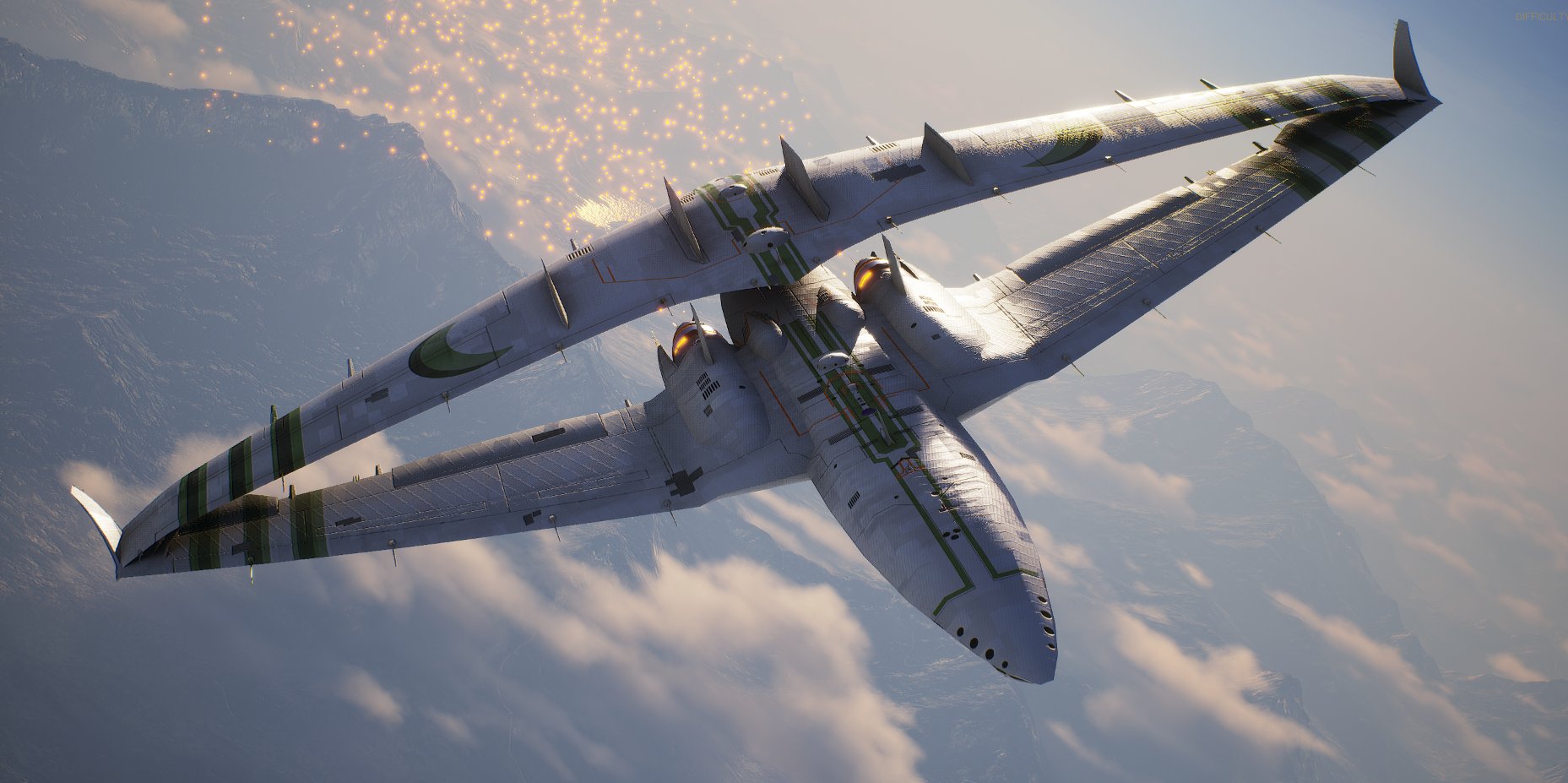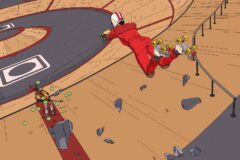Historically speaking, there’s pretty much never been a shortage of video games about flying and/or aerial warfare. Ever since Ultimate Air Combat launched for the NES in 1992, flying a plane (or spaceship, or helicopter) and shooting down other pilots has been a staple in the gaming world, with a few titles even coming to arcades and other consoles before that.
But Project Wingman is a bit different than the other dogfight simulators out there. For one thing, the game combines modern realistic visuals with a slightly more user-friendly “arcade” style of play — meaning that while it might not be easy for everyone, you won’t feel like you need an actual pilot’s license to clear the campaign. The game is built around smooth and enjoyable gameplay rather than going in-depth about every little detail required to actually be a fighter pilot, all while giving players the possibility of testing their flight skills (and motion sickness sensitivity) in a VR mode.
Project Wingman clearly channels the fan-favorite Ace Combat games of yesteryear without taking itself too seriously in any one department. It also provides a surprisingly strong narrative for its campaign — which takes a surprising plot twist, for those expecting the classic military hero cliches — and a more freeform mode called “Conquest” that draws inspiration from roguelike games, where the player completes missions to earn new planes and upgrades while the enemies increase in difficulty.
Now, the folks at Australian developer Sector D2 have released a brand new look at the creation and inspiration behind the soundtrack, so SPIN spoke with Project Wingman creator Abi Rahmani and composer Jose Pavli about the game, the score, and everything that went into it.
SPIN: Considering this obviously isn’t your normal soundtrack for an aerial combat game, how did you figure out what you wanted to do with writing and instrumentation?
Jose Pavli: As early as I can remember in the process of writing the soundtrack, my main concern was to give Project Wingman its own musical identity. I wanted players to recognize a Project Wingman track as soon as they heard the first notes. To achieve that, I chose to use different instruments to picture different elements from the lore. The solo cello or violin playing lyrical melodies with a lot of vibratos are meant to emphasize freedom and lightness you might feel while flying in the sky. Those melodies are also attached to the fight for freedom happening during the campaign.
As for the Federation, I went for a more industrial feel, with synth-based percussions and big brass to play their melodies. It gives them a threatening feel and helps create contrast with the Independence Force. I’ve also used other solo instruments to picture elements from the lore, like the Mongolian throat singing for the cordium, or the church organ for “Crimson” team.
Seeing as you didn’t use an adaptive progression for the score, how do you find a perfect loop for the music to keep building that tension during a segment that might take some players much longer than others?
Pavli: Since we chose not to have adaptive music for Project Wingman, we decided to go for a very simple but efficient approach. Each track had to convey the right emotion for the mission it’s used for. On top of that, I made sure that each track had multiple climaxes. This way, wherever you’re on the music, every event that takes place during a mission happens either during a moment where the tension is building or during a satisfying epic “release.” I believe those two phases can match pretty much anything that the player is doing during the missions.
I don’t think I’ve ever seen anything quite like Conquest mode in an aerial combat game before. Why did you decide to add in the roguelike elements in a genre where those generally don’t exist?
Abi Rahmani: We’ve always wanted something with a decent replay value. Without a scenario editor of some kind, we thought an endless game mode would be the perfect fit. Balancing it is quite tough, but we’ve made sure that it fits every player’s style by introducing modifiers and a plethora of difficulty adjustments to suit the player’s combat tastes. The reception of Conquest mode was greater than we thought. We’re still actively working on the game mode and working on bringing in new systems and map variety to introduce more replayability.
For the campaign, it’s not the “blow up the enemy forces and win the war” tale that a lot of other titles go with. What inspired you to flip that standard storyline on its head for this one?
Rahmani: Having a slightly different story than the conventional “blow up the enemy forces and win the war” is what made me love the genre again. Taking inspirations from Mecha shows and similar games in the genre — I think it’s clear for people who are familiar with the genre where we have taken inspirations from, whether it’s the themes, characters, or story progression. And inevitably, there are people that are going to play the game for the sole purpose of “blowing up everything,” but I’m sure people who were expecting more in the story aspect can be pleased with the additional effort we’ve put into it.
From a composing perspective, how did you go about elevating and changing the soundtrack alongside the campaign’s narrative while still keeping it harmonious with the score in the beginning?
Pavli: That was honestly the biggest challenge of the soundtrack. To me, the most important thing was consistency. Without having a consistent soundtrack, I wouldn’t have been able to convey the right emotions at the right time, especially in a game without cutscenes.
On one hand, having leitmotivs attached to characters, squadrons, and elements from the lore allowed me to reuse musical ideas throughout the soundtrack. I was able to add more instruments to the sound palette without having to worry about the soundtrack sounding too different from the beginning. On the other hand, I had to follow the story and add the instruments successively, according to what happens in the game.
As I said in the [Making of] video, it is not a single event that makes the world darker, but rather a series of smaller events leading to that “apocalypse” feeling you have toward the end of the campaign. Therefore, I had to make sure the soundtrack and its instrumentation were growing bigger progressively, as the world was becoming more and more dangerous.
How did it feel to see the game’s huge pre-launch success on Kickstarter?
Rahmani: It was overwhelming. I never really expected the game to get to this stage in the beginning, and it was meant to be a fun little project. But the supportive community for the game is what made us push even harder for a better game. To this day, I am still extremely grateful to every single one of the backers of Kickstarter to make this a reality. We are still actively working on the game to bring updates and new content to make sure our gratitude to the community goes beyond my words.





